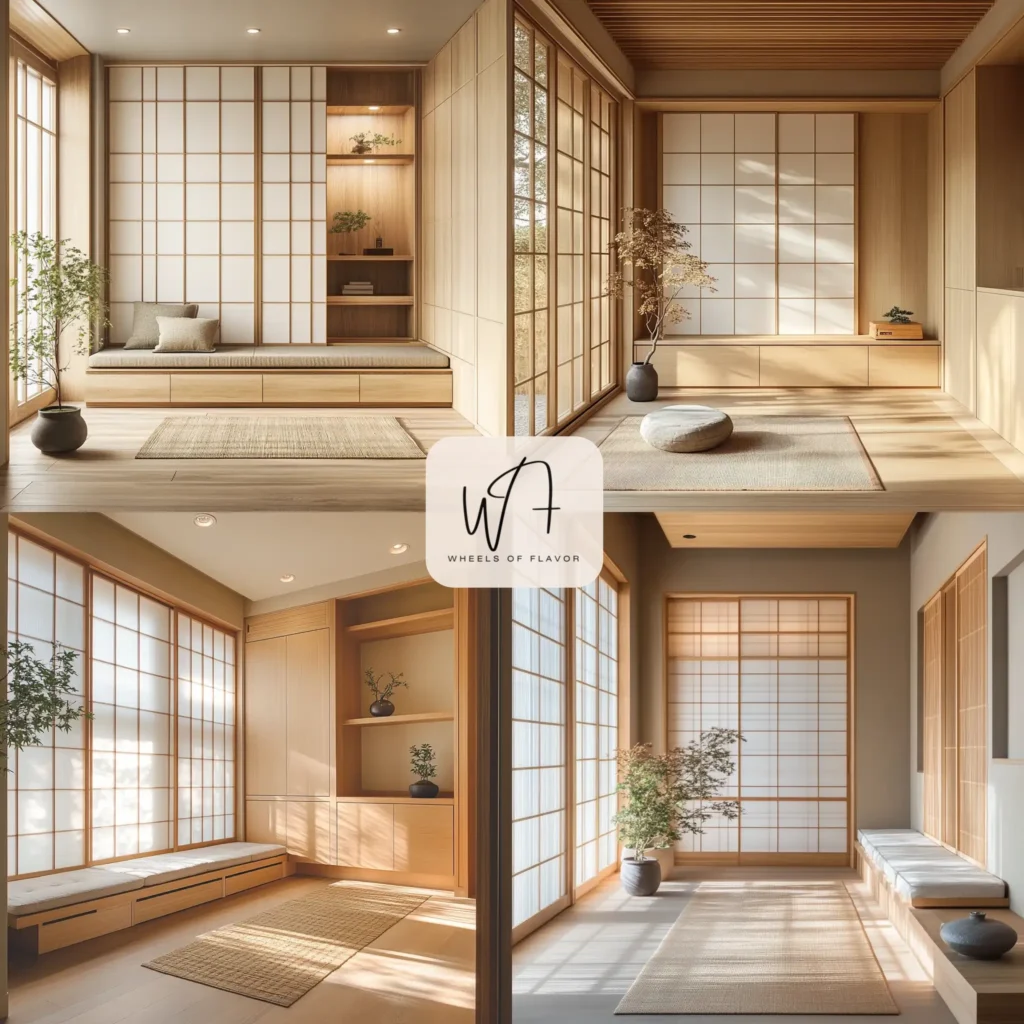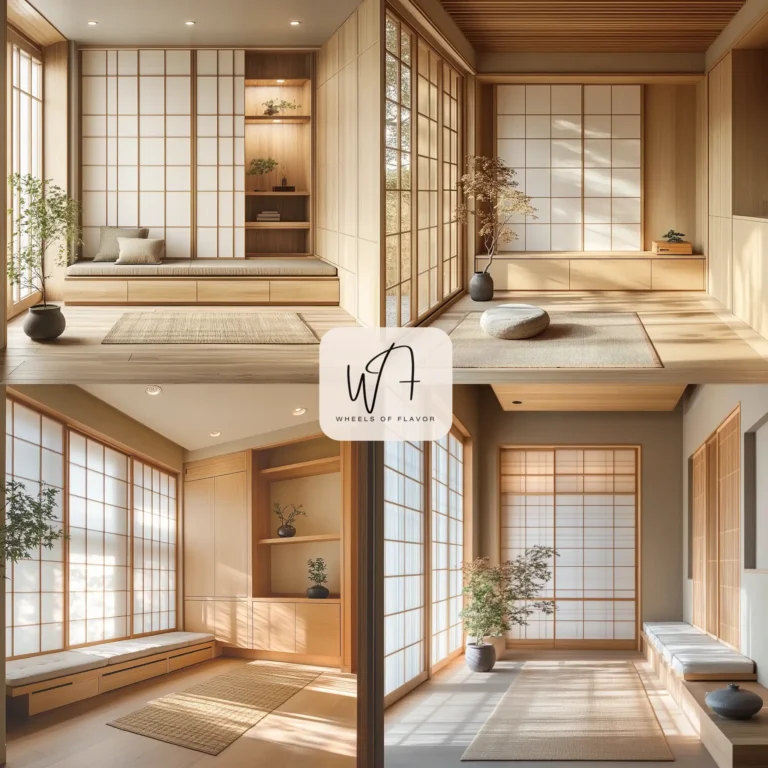Hidden Japanese mudrooms are the perfect fusion of practicality and tranquility, offering a seamless way to keep your home organized while embracing the minimalist beauty of Japanese design. A mudroom, traditionally a space to remove shoes and outerwear, becomes an artful retreat when infused with Japanese principles like wabi-sabi and ma (negative space). This article explores three ingenious ways to design a hidden Japanese mudroom that enhances your home’s serenity and functionality, ensuring your entryway remains both practical and aesthetically pleasing.
Why Choose a Hidden Japanese Mudroom?
A hidden Japanese mudroom is more than just a storage area; it’s a deliberate design choice that prioritizes simplicity, harmony, and utility. By incorporating elements like sliding shoji screens or concealed cabinetry, you can create a space that feels open yet discreetly hides clutter. This approach aligns with Japanese aesthetics, which value clean lines and natural materials, making your mudroom a calming transition between the outside world and your home’s interior.
The appeal of a hidden Japanese mudroom lies in its ability to blend into your home’s architecture. Whether you live in a modern apartment or a traditional house, this design can be adapted to suit various spaces. It’s particularly ideal for those who want to maintain a minimalist aesthetic without sacrificing storage. Let’s dive into three creative strategies to craft your own hidden Japanese mudroom.
- Incorporate Sliding Shoji Screens for a Hidden Japanese Mudroom
Sliding shoji screens are a hallmark of Japanese design, offering both flexibility and elegance. These lightweight, translucent panels made of wood and rice paper can conceal storage areas while allowing soft light to filter through, creating a serene atmosphere. By installing shoji screens in your mudroom, you can hide shelves, hooks, or cubbies for shoes and coats, keeping them out of sight when not in use.
To implement this, consider a custom-built shoji screen that slides along a track to cover a recessed storage nook. Opt for natural wood like cedar or bamboo to enhance the organic feel. The screens can be designed to blend seamlessly with your walls, making the mudroom appear as part of the room’s architecture. This approach not only hides clutter but also adds a touch of Zen to your entryway.
For inspiration, check out this guide on Japanese interior design principles from Architectural Digest, which highlights the use of shoji screens for creating versatile spaces. Their insights can help you choose materials and layouts that align with your vision for a hidden Japanese mudroom.
- Utilize Built-In Storage with Minimalist Aesthetics
A hidden Japanese mudroom thrives on clever storage solutions that maintain a clean, uncluttered look. Built-in cabinetry with flush doors or seamless panels can conceal everything from umbrellas to outdoor gear. To stay true to Japanese design, choose materials like light oak or walnut, and avoid ornate handles or embellishments. Instead, opt for push-to-open mechanisms or subtle grooves for a sleek appearance.
For example, you could install a low bench with hidden compartments underneath for shoe storage. Above the bench, add a row of slim cabinets for coats and bags, painted in neutral tones like soft gray or beige to blend with the walls. This setup keeps the mudroom functional without overwhelming the space visually. Pairing this with a tatami mat or a bamboo rug can further enhance the Japanese aesthetic.
To explore more storage ideas, visit our Styles and Trends section for tips on integrating functional design into your home. These resources offer practical advice on maximizing space while keeping aesthetics in mind.

- Create a Multi-Functional Space with Modular Elements
A hidden Japanese mudroom can double as a multi-functional space by incorporating modular furniture. Modular designs, such as foldable benches or stackable storage units, allow you to adapt the space based on your needs. For instance, a fold-down table can serve as a temporary workspace or a surface for organizing items, then tuck away to maintain the room’s minimalist appeal.
Consider using modular shelving units that can be reconfigured to accommodate different items, from shoes to seasonal gear. These units can be hidden behind a sliding panel or a minimalist curtain made of natural linen, which adds texture while keeping the space airy. This approach is ideal for smaller homes where space is at a premium, as it allows the mudroom to serve multiple purposes without feeling cramped.
For additional ideas on multi-functional spaces, Dwell’s article on small-space living offers excellent insights into modular furniture and compact design solutions. Their examples can inspire you to think creatively about your hidden Japanese mudroom.
Benefits of a Hidden Japanese Mudroom
A hidden Japanese mudroom offers several advantages beyond aesthetics. It promotes organization by providing designated spaces for everyday items, reducing clutter throughout your home. The minimalist design encourages mindfulness, as the space feels calm and uncluttered, aligning with Japanese principles of simplicity. Additionally, a well-designed mudroom can increase your home’s resale value, as buyers appreciate functional yet stylish entryways.
From an SEO perspective, a hidden Japanese mudroom appeals to homeowners searching for unique, space-saving solutions. By targeting this niche, your home can stand out in a crowded market, whether you’re selling or simply sharing your design journey online. The combination of practicality and cultural elegance makes this design trend a timeless choice.
Tips for Maintaining Your Hidden Japanese Mudroom
To keep your mudroom functional and serene, regular maintenance is key. Declutter periodically to ensure only essential items remain in the space. Use natural cleaning products to preserve the integrity of wood and other materials. For shoji screens, gently wipe them with a damp cloth to avoid damaging the rice paper. Adding a small indoor plant, like a bonsai or fern, can enhance the Zen vibe while keeping the air fresh.
For more home maintenance tips, browse our Styles and Trends category, where you’ll find advice on keeping your spaces both beautiful and practical.
FAQs About Hidden Japanese Mudrooms
What is a hidden Japanese mudroom?
A hidden Japanese mudroom is an entryway storage area designed with Japanese minimalist principles, using elements like shoji screens or concealed cabinetry to hide clutter while maintaining a serene aesthetic.
How can I incorporate a hidden Japanese mudroom in a small space?
Use modular furniture, sliding panels, or built-in storage to maximize space. Opt for neutral colors and natural materials to keep the area feeling open and uncluttered.
What materials are best for a hidden Japanese mudroom?
Natural materials like bamboo, cedar, oak, or rice paper for shoji screens work best. Choose neutral tones and avoid synthetic finishes to maintain authenticity.
How does a hidden Japanese mudroom improve home organization?
It provides designated storage for shoes, coats, and other items, reducing clutter in other areas of the home. Hidden compartments keep the space tidy and visually appealing.
Can a hidden Japanese mudroom increase home value?
Yes, a well-designed mudroom adds functional and aesthetic value, appealing to buyers who value organized, stylish entryways.

